A Tale of Three Dimes and Climate Change
It is a very short story really; more like a factoid. It goes like this. Take 3 dimes and place them on top of one another. That is a stack about 3 millimeters high. This is the amount the Earth’s oceans will rise this year; just like they did last year and the years before that in the past decade. Forecasts show that the amount of sea level rise per year will be about 4 millimeters within the next few years.
See graph “Global Average Absolute Sea Level Change, 1880 – 2014.” The data are based on both tidal gauge, and more recently, satellite measurements; the publication sources are also listed.
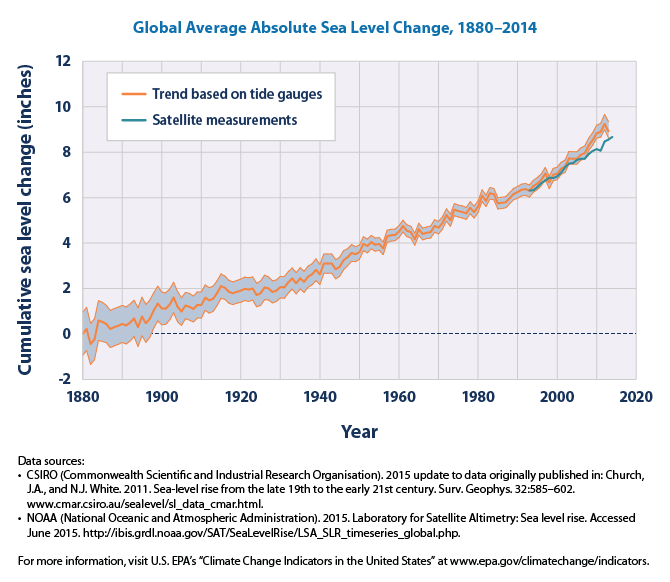
So where is this rise coming from? See image labeled “RISE OF SEA LEVELS” in the form of water drops and is based on data from Intergovernmental Panel on Climate Change.
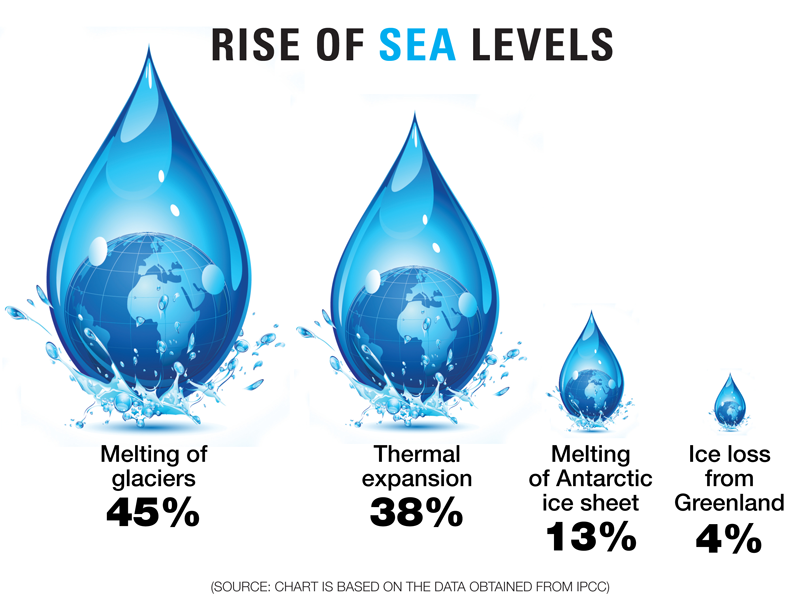
Sea level rise is primarily from the four factors shown: Melting of glaciers 45%, Thermal expansion 38%,
Melting of Antarctic ice sheet 13%, and Ice loss from Greenland 4%.
All four factors are based on rising temperatures and increased heat in the water – air – land components of the Earth. Have the temperatures been rising? You bet! Check out the bar chart from National Oceanic and Atmospheric Administration [NOAA] titled “Global Land and Ocean Temperature
Anomalies, September.”
It was a lovely month here in the North Country, but it was also the warmest September, by far, in the 135 year temperature record.
Perhaps this one month was an aberration!
Not at all; check out the second bar chart from NOAA titled, “Global Land and Ocean Temperature Anomalies, January – September.”
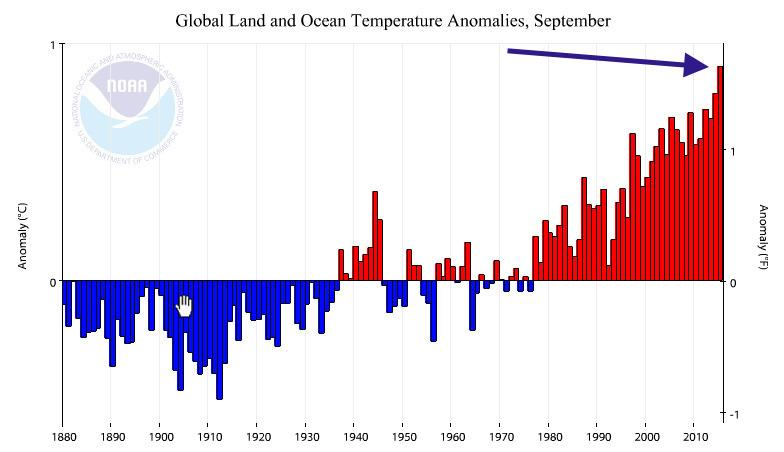
Remember the “Polar Vortex” and the low temperatures and snowy winter we experienced? It was still, globally, the warmest nine month period in the temperature record. Remember that the Iditarod Dog Sled Race in Alaska had to change its route due to a lack of snow, and the temperatures there and in parts of Siberia were warmer than many parts of the U.S.?
Furthermore, the trend strongly suggests that the year 2015 will be the warmest on record. 2014 currently holds the record.
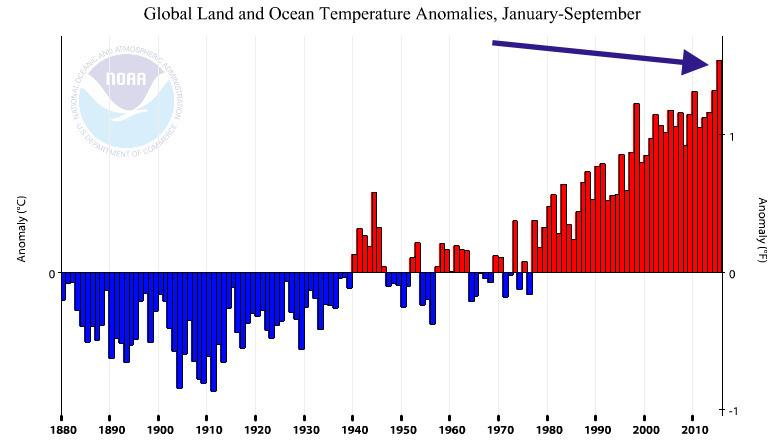
So what is the issue? It is called B.A.U., or business as usual. While we are in the early stages of an energy transition, from fossil fuels to renewables, it is moving slowly. As a nation, as a global civilization, we are still emitting enormous, and rising, amounts of the primary greenhouse gas, carbon dioxide. Emission estimates for 2015 are in the range of about 35 billion tons.
Let’s look at that number again. It can be written as 35,000,000,000 tons, or even as 70,000,000,000,000 pounds. We really can’t lose sight of how large that amount is.
Lester R. Brown, and co-authors, published a book by Earth Policy Institute in early 2015, titled “The Great Transition.” The authors cover through 2014, the “old energy economy,” with its reliance on fossil fuels, and “the new energy economy” with its emphasis on renewable energy sources. This is, and will continue to be, a monumental shift in the way we power the future global economy.
The challenge is; can this shift be done before we reach global climate tipping points where Earth’s climate systems change from one state to another, and will the vested interests in the “old way” [fossil fuels] prevent or slow up this transition?
The authors make a compelling case that we are in the midst of this change right now and it is unfolding before us every day.
An October 26, 2015 story in the New York Times describes a new factory being built in Buffalo that will open in early 2016. Gov. Cuomo has committed up to $750 million to build this 1.2 million square-foot SolarCity factory that will be the largest of its kind in the Western Hemisphere and create 5,000 jobs.
It will build solar panels and capitalize on the growth of solar power. The chairman of SolarCity is Elon Musk who also leads Tesla, the electric car company.
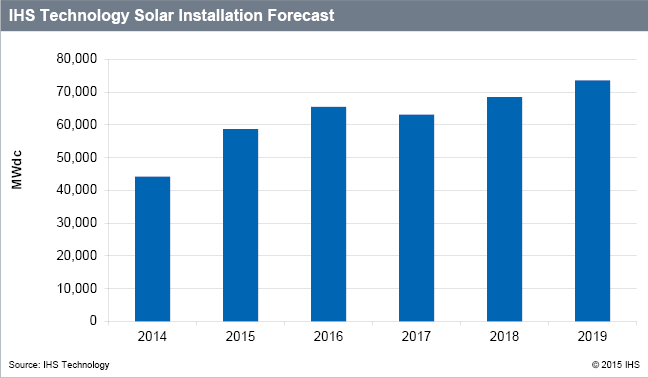
See bar chart labeled “IHS Technology Solar Installation Forecast.” Growth looks strong with 59,000 megawatts of solar power installed this year which is equivalent to about 50 nuclear reactors worth of energy.
And so it goes.
The scientific career of Raymond N. Johnson, Ph.D., spanned 30 years in research and development as an organic/analytical chemist; he is currently founder and director of the Institute of Climate Studies USA (www.ICSUSA.org). Climate Science is published the first Sunday of every month.



